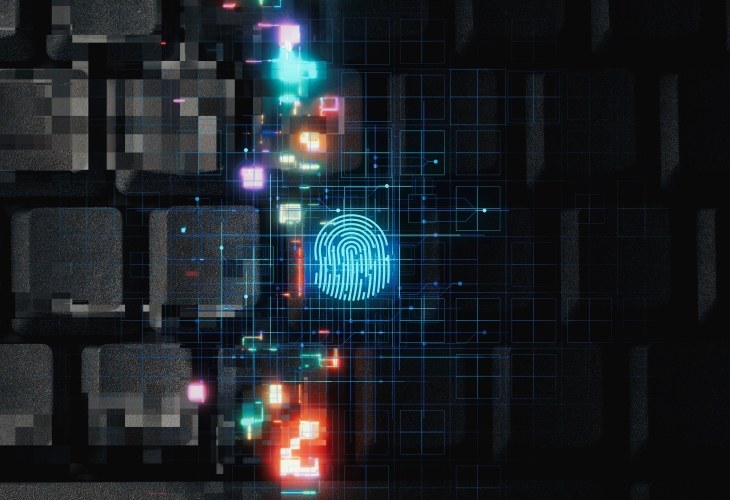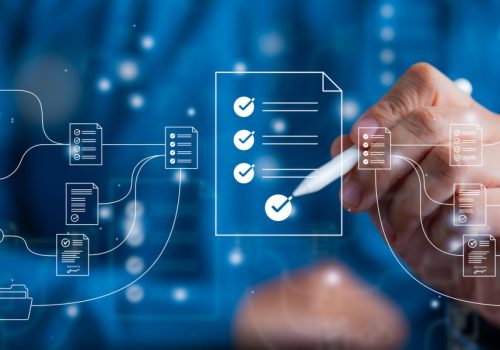In an era of escalating cyber threats and data breaches, where cybersecurity threats emerge continuously and are getting more sophisticated than ever before, organizations are compelled to bolster their cybersecurity posture. The ISO/IEC 27001:2022 standard provides a robust framework for establishing an Information Security Management System (ISMS). This standard acts as a guiding light, enabling organizations to identify, assess, and mitigate risks to their information assets systematically.
Its integration with Identity Management (IDM) provides a means of verifying users’ identities and ensuring that they have appropriate access permissions to protect data, as well as a robust defense against cyber risks. By integrating IDM with ISO/IEC 27001:2022, organizations can create a seamless interaction between their security protocols and identity management practices.
With data breaches and cyber-attacks posing devastating consequences, a guide to developing a resilient and adaptive cybersecurity infrastructure, as well as complying with security standards is fundamental. Organizations can navigate the complex cybersecurity landscape with confidence by understanding ISO/IEC 27001:2022 and IDM’s strategic alliance, safeguarding their digital transformation initiatives, and protecting their critical data.
This article presents a pragmatic approach to understanding how the convergence of ISO/IEC 27001:2022 and Identity Management can strengthen an organization’s cybersecurity posture while safeguarding critical data.
Defining Objectives and Assessing Vulnerabilities
To embark on the journey of strengthening cybersecurity posture, organizations must identify specific objectives and assess existing vulnerabilities. This involves conducting a comprehensive risk assessment, understanding potential threats, and evaluating the impact of data breaches.
With a clear understanding of cybersecurity goals, organizations can tailor their ISO/IEC 27001:2022 and IDM integration strategy to address their unique challenges.
Once organizations have identified their cybersecurity objectives and assessed vulnerabilities, the next crucial step is to develop a tailored integration strategy that aligns with their specific needs and challenges. Regular audits, assessments, and updates are necessary to adapt to evolving cyber threats and changing business requirements.
In this landscape, organizations that leverage the power of ISO/IEC 27001:2022 and IDM integration not only fortify their defenses but also gain a competitive edge. Ultimately, this proactive approach to cybersecurity sets the stage for a more secure, resilient, and agile digital future.

Establishing a Collaborative Team
Forming a collaborative team comprising cybersecurity experts, IT professionals, compliance officers, and key stakeholders is essential. This cross-functional team will play a crucial role in designing and implementing the cybersecurity strategy, ensuring alignment with ISO/IEC 27001:2022 guidelines and IDM best practices.
Effective communication and collaboration within this cross-functional team are paramount to the success of the integration process. Regular meetings and open channels of communication facilitate the exchange of insights and perspectives, allowing for a holistic approach to cybersecurity. This cultural shift empowers employees to be proactive participants in safeguarding data, creating a more robust defense against cyber threats and reinforcing the organization’s overall resilience.
Integrating ISO/IEC 27001:2022 and Identity Management
The next step is to bridge ISO/IEC 27001:2022 with Identity Management, creating a unified and comprehensive cybersecurity framework. This integration involves mapping ISO/IEC 27001:2022’s requirements with IDM components, such as user identification, authentication mechanisms, access controls, and privileged access management. The collaborative team will work to develop a seamless integration that streamlines security processes and minimizes potential gaps.
Furthermore, this integration allows for enhanced threat detection and incident response capabilities. For instance, real-time monitoring of user activities, access patterns, and potential anomalies becomes more robust, enabling rapid identification of security breaches or suspicious activities. The integration also simplifies incident response by providing a comprehensive view of user access and data interactions, allowing security teams to respond swiftly and effectively to mitigate potential risks.
Additionally, organizations can leverage the wealth of data generated by IDM and ISO/IEC 27001:2022 integration to enhance their overall security posture. Advanced analytics and machine learning can be applied to this data to identify trends, predict potential threats, and continuously finetune security protocols.
Implementing in Phases
Deploying the integrated cybersecurity strategy in phases is recommended to mitigate potential disruptions and challenges. A phased approach allows organizations to test and refine their IDM and ISO/IEC 27001:2022 integration gradually, making necessary adjustments along the way. Initiating with a pilot project or a specific department provides valuable insights and lessons for a successful full-scale implementation.
As each phase unfolds, organizations can ensure that their employees and stakeholders are well-prepared to embrace the changes in security protocols and identity management procedures. This proactive investment in training fosters a culture of cybersecurity vigilance across the organization, reducing the risk of human errors and security breaches.
Organizations should tailor their phased deployment to align with their unique operational needs and risk profiles. This approach not only minimizes disruptions but also maximizes the long-term benefits of a well-integrated, agile, and resilient cybersecurity framework.
User Training and Awareness
Successful cybersecurity implementation heavily relies on user acceptance and understanding. Thorough user training and awareness programs are crucial to ensure all employees comprehend the significance of ISO/IEC 27001:2022 and IDM in safeguarding data. Organizations must emphasize the importance of adhering to security protocols, managing access rights responsibly, and promptly reporting suspicious activities. Employees should be encouraged to actively contribute to the organization’s security posture. This includes reporting potential vulnerabilities, suggesting improvements, and staying vigilant against social engineering attacks like phishing.
Recognizing and rewarding those who consistently follow security best practices can reinforce the importance of ISO/IEC 27001:2022 and IDM compliance throughout the organization. Ultimately, it is the people within an organization who can be both its greatest strength and its most significant vulnerability in the realm of cybersecurity.
Therefore, investing in their education and empowerment is integral to a successful and holistic cybersecurity strategy.
Leveraging Identity Management for Insider Threat Mitigation
Identity Management plays a pivotal role in mitigating insider threats – a significant cybersecurity concern. By implementing strict access controls, role-based privileges, and regular audits, organizations can effectively minimize the risk of data breaches from within. Privileged Access Management (PAM) should be a key aspect of this approach to ensure that only authorized personnel have access to sensitive data and critical systems. Furthermore, in the age of remote work and a dispersed workforce, Identity Management becomes even more critical.
This flexibility not only enhances user productivity but also ensures that security measures travel with the user. By seamlessly integrating ISO/IEC 27001:2022 and IDM within the framework of remote work, organizations can maintain consistent security standards, effectively protecting data and systems whether employees are working from the office, from home, or on the go.

Enhancing Incident Response and Recovery
A comprehensive IDM strategy complements ISO/IEC 27001:2022’s incident response and recovery capabilities. Organizations should focus on real-time monitoring of user activities, prompt detection of anomalies, and automated response mechanisms. By intertwining IDM with incident management protocols, organizations can swiftly respond to security incidents and reduce the impact of potential breaches. Regular reviews and audits of identity management practices provide valuable insights into areas that may need strengthening or refinement. By analyzing the data generated through IDM, organizations can proactively identify patterns, vulnerabilities, and potential areas of concern, enabling them to fine-tune their security protocols to stay ahead of evolving threats.
It strengthens trust among customers, partners, and stakeholders, reinforcing the organization’s reputation as a guardian of data privacy and security.
As cybersecurity remains a top priority in today’s interconnected world, the convergence of ISO/IEC 27001:2022 and IDM not only fortifies an organization’s defenses but also positions it as a leader in the everevolving landscape of digital security.
Continuous Improvement and Adapting to Emerging Threats
Cybersecurity is an ongoing battle against constantly evolving threats. Organizations must adopt a proactive stance by continuously improving their cybersecurity practices and adapting to emerging threats. Regular risk assessments, penetration testing, and staff training on the latest cybersecurity trends are essential elements of this approach.Moreover, staying up-to-date with the evolving regulatory landscape is paramount. Compliance with ISO/IEC 27001:2022 and IDM not only ensures data security but also helps organizations meet regulatory requirements effectively.
As data privacy laws become increasingly stringent, organizations must remain vigilant in their compliance efforts. A proactive stance towards compliance not only mitigates legal risks but also aligns with customer expectations for responsible data handling.
Additionally, fostering partnerships and collaborations within the cybersecurity community is a strategic move. Sharing threat intelligence and best practices with peers and industry experts can provide invaluable insights into emerging threats and innovative defense strategies.
Conclusion
Strengthening an organization’s cybersecurity posture requires a pragmatic approach that intertwines ISO/IEC 27001:2022 and Identity Management. By defining objectives, collaborating across departments, and integrating these two critical components, organizations can create a robust and cohesive cybersecurity framework. The journey involves phased implementation, user training, and leveraging IDM to mitigate insider threats. Incident response and continuous improvement further enhance the organization’s ability to safeguard critical data and fortify against emerging cyber risks. Embracing this pragmatic approach empowers organizations to proactively protect their digital assets, bolster their resilience, and instill trust among stakeholders. By uniting ISO/IEC 27001:2022 and Identity Management, organizations position themselves at the forefront of data protection and cybersecurity excellence.









